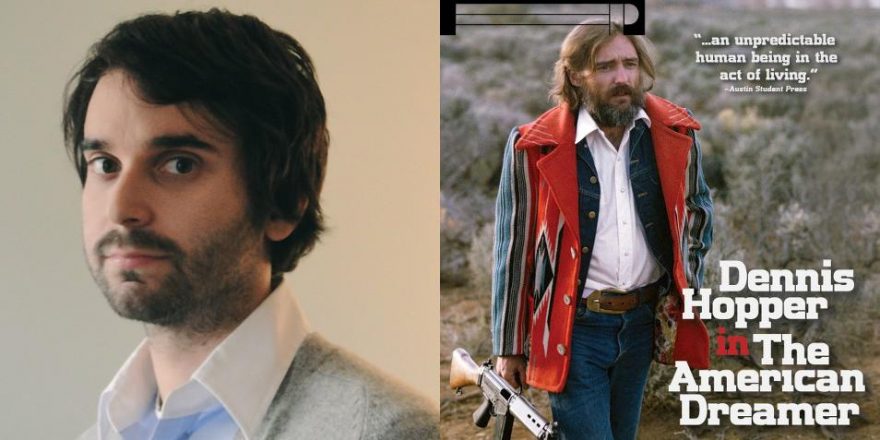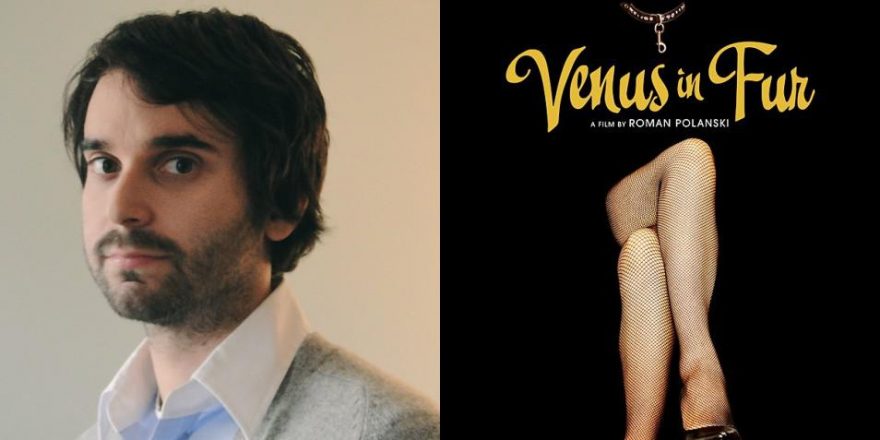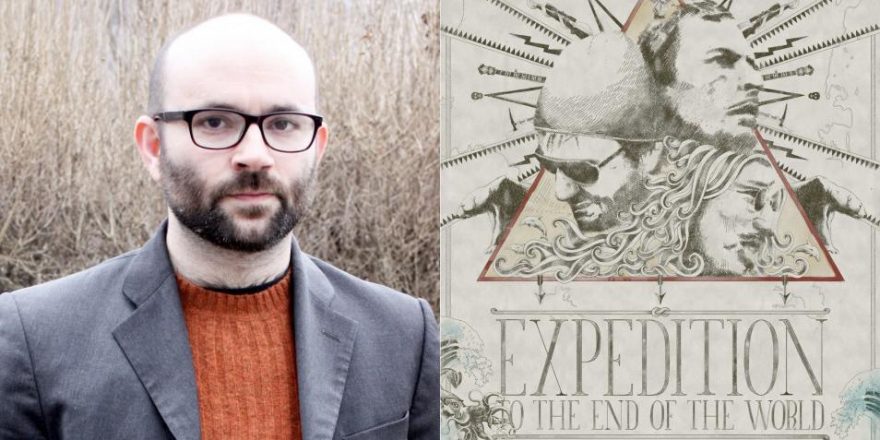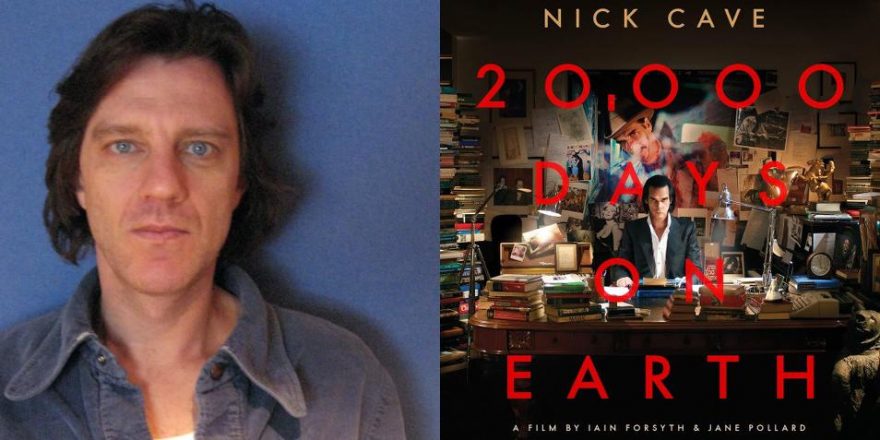The welcome and necessary resurfacing of The American Dreamer, via a long overdue home-video release and limited theatrical engagements, is both success and failure. The failure (which I’ll expand on later) is not an artistic one: I remain, as ever, very fond of this pseudo-documentary about Dennis Hopper, supposedly captured in his natural habitat while editing his eternal masterpiece The Last Movie. I’ve heard Schiller speak several times at screenings of The American Dreamer and he always describes wanting to make the film something in the vein of Robert J. Flaherty’s Nanook of the North, but with Dennis Hopper instead of an Eskimo.
When I first saw The American Dreamer I was unaware it wasn’t a “real” documentary. The film’s complicated relationship with reality is indicated by the fact that Dennis Hopper has a writing credit on the film, and according to Schiller was playing a character a bit like and also called Dennis Hopper. When, some years ago, I first saw the film on a double bill with Hopper’s astounding film Out of the Blue, an angry debate raged in the lobby after the screening. A friend took the innumerable outlandish statements Hopper makes in the film (such as his declarations that he doesn’t read and also may be a lesbian) as evidence that Hopper was not in fact a misunderstood genius struggling with the demons of art and commerce while editing a film about the demons of art and commerce but that he was a buffoon, a fraud and a charlatan posing as a countercultural figurehead without the bona fides to back it up. Neither of us knew then that Hopper was performing as a version of himself and, in conjunction with Schiller and co-director L.M. Kit Carson, was commenting on creative issues that still had same the power to provoke angry anti-hippie reactions from urbane self-styled brainiac types in Manhattan as was the case upon the initial release of Easy Rider, The American Dreamer and The Last Movie.
The two films provide a fascinating portrait of a moment of experimentation that most people never even dream of approaching.The Last Movie is top 10 all-time for me, the purest expression of unfiltered artistic ambition and anxiety produced within the traditional confines of the Hollywood studio system (it was financed by Universal) that I have ever seen. (My devotion to and appreciation of Hopper’s output of this period led me to depict an American filmmaker who sets out to remake The Last Movie in Mexico on the eve of the Mayan apocalypse in Mark Peranson and Raya Martin’s film La última película, which also served as a crypto-remake/homage to The American Dreamer.) The American Dreamer and The Last Movie (which, criminally, is still unavailable in any legal format) have always acted as companion pieces to one another; taken as a whole, the two films provide a fascinating portrait of a moment of experimentation both behind and in front of the camera that most people never even dream of approaching.
The central conceit of The American Dreamer, namely the complex relationship between truth and performance in the presence of a supposedly non-fiction camera, is something my friend Robert Greene is better placed to comment on than me. His films Actress and Kate Plays Christine pick up where Schiller, Carson and Hopper left off 45 years ago – proving just how ahead of his time Hopper was. To contextualize The American Dreamer according to Robert’s gospel on the relationship between camera, filmmaker and subject: the film takes a subject who pretends to be other people for a living (Hopper) and allows him to create a character (Hopper) who then allows himself to be manipulated by filmmakers (Schiller and Carson) who take this second personality and manipulate it within the framework of what appears to be a documentary portrait but is actually something else entirely. The American Dreamer isn’t “real” in any traditional sense of the word, but watching it casually as part of a double feature or now in this lovely new restoration stripped of a Q & A or additional context, you wouldn’t know it. You’d take it at face value and have a different experience than I have had on my numerous times revisiting it.
And that is where the failure of this re-release comes in. It makes me sad that the restoration and reintroduction of an essential piece of film history such as The American Dreamer had to happen now, as opposed to 10 or 15 years ago, when Hopper and Carson would have been alive to participate alongside Schiller in the revealing of its secrets, and when unearthed curiosities newly available on home video sold robustly, became cult items and eventually found their way into the canon. This reissue would have been a huge hit in the prime era of DVD sales; had both The American Dreamer and The Last Movie been released on video in 2006 (when The Last Movie was revived theatrically in a beautiful restored print), they would now be an irrefutable part of the film culture, instead of eternally fighting for recognition in a decentralized landscape where younger generations only rediscover old films by clicking around on streaming platforms. I hope that any attention brought as a result of The American Dreamer finally allows The Last Movie to be made available to the passionate few who would still pre-order a restored version of it. I’ve been waiting patiently to own both of these films, so at least we are finally halfway there.







